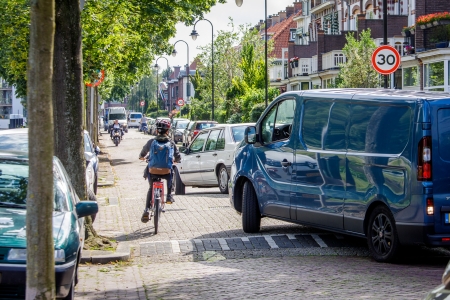Sustainable Road Safety is a vision on how road safety can be systematically ensured to a maximum extent. The human dimension is the primary focus: man who is vulnerable, makes mistakes and does sometimes deliberately not abide by the rules. The vision is based on a pro-active approach: the traffic environment should be designed to rule out serious crashes. If an accident does happen, serious consequences should be limited. Sustainable Safety is a safe system approach: all elements of the traffic system are taken into account in interrelation to one another. Road Safety is thus the basic quality of road traffic. In practice, Sustainable Safety comes down to:
- Roads, the road environment, vehicles and technological solutions are compatible with and supportive of human capabilities. In addition, they offer maximum protection – whether or not helped by extra means of protection – to all road users in or on a vehicle and in their immediate surroundings. Responsible organizations and the central government, as the ultimately responsible party, take care that these conditions are always met and that deficiencies are addressed.
- Road users are prepared as much as possible for the traffic task through education, information and training. They are aware of the safety consequences of their own choices and what they can do about them. Traffic professionals involved in the development, implementation, management, and maintenance of the traffic system possess the knowhow to realize sustainable road safety.
- Inspectors and law enforcement authorities exercise sufficient control to ensure that the system functions at maximum safety (both at the level of road and vehicle design as well as road user behaviour) and that traffic professionals exert themselves appropriately in their contribution to sustainably safe road traffic. Enforcement occurs on the basis of the most effective combination of regulation, inspection and fines. Unsafe behaviour by road users and by traffic professionals will, where possible, be ruled out or at least be made unattractive by effectively applying knowledge about the ‘human dimension’ in the design of the traffic system. This kind of enforcement is one of the roles of the government which is responsible for the system (see the question What does the organization principle ‘Responsibility’ imply?).
- Trauma care and – where possible – technology in the vehicle ensure a fast response, optimum care and maximum recuperation of (seriously injured) road users. A short travel time to the hospital and sufficient space for trauma care are also important.
The vision of Sustainable Road Safety strives for maximum safety of the traffic system, that is to say a system that is as safe as possible. The vision identifies and acknowledges the mobility demands of various groups in our society, the importance of proper accessibility by road and the need for personal freedom of choice. It is a fact that certain modes of transport are inherently less safe (i.e. two-wheeled vehicles) and certain road users are more vulnerable to traffic injury than others (e.g. children, teenagers, seniors). To enhance safety we distinguish between eliminating, minimizing and mitigating risks:
- Eliminating: ideally, dangerous situations are made physically impossible so that people do not find themselves in such situations.
- Minimizing: choosing dangerous situations or modes of transport is made unattractive to limit people’s exposure to risks.
- Mitigating: where people are exposed to risks, the consequences are mitigated by taking appropriate measures.
